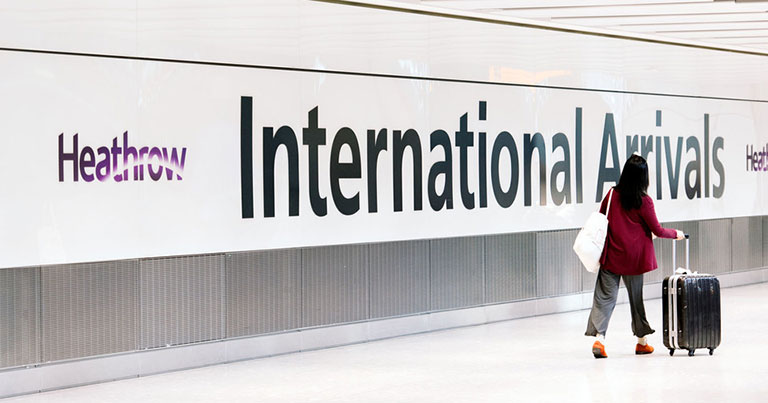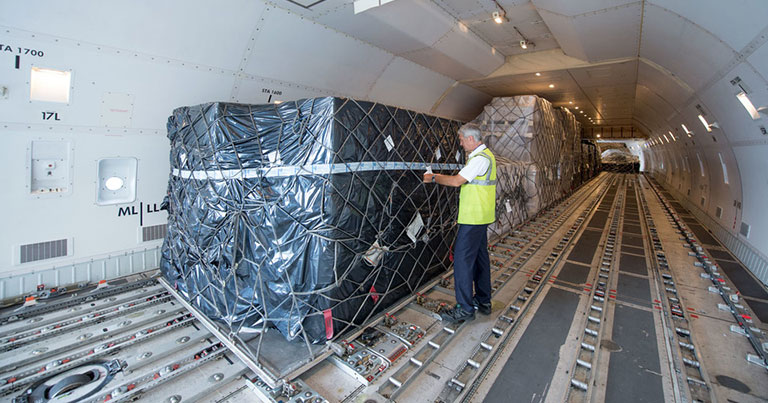Having handled a record 80.9 million passengers in 2019, Heathrow, like all airports, is now having to adapt in the face of the COVID-19 crisis. FTE caught up with Amanda Owen, Health and Safety Director at Heathrow, to find out what impact the coronavirus pandemic has had so far and what steps the airport is taking to prepare for the return of regular operations.

FTE: What has been the measurable impact of COVID-19 on Heathrow so far?
Amanda Owen: Our industry has been especially hard hit by this pandemic. Prior to the outbreak Heathrow reported steady, uninterrupted record growth, but our passenger numbers in March shrunk by 52% compared to the same time last year. They’re set to decrease even further, dropping by 90% in April following the extension of the UK’s lockdown and the FCO’s advice against all but essential travel.
FTE: What disruption/crisis management initiatives have already been implemented at Heathrow as a result of COVID-19?
AO: Heathrow’s number one priority since the start of the outbreak has been keeping our passengers and colleagues safe. This is why our airport has closely followed the advice of the Department for Health and Public Health England (PHE), as they set the procedures for all of the UK’s ports of entry. We have worked closely with both Government departments to support them as they’ve implemented enhanced monitoring of Heathrow’s inbound passengers.
We have also stepped up cleaning routines, provided PPE (personal protective equipment) to colleagues, installed additional hand sanitisers, closed non-essential passenger facilities and rolled out new signage to help people socially distance. This has all been done while clearly and frequently communicating these changes with passengers, colleagues, unions, airlines partners and Government.
Practicing good hygiene is more important than ever right now. Remember to take precautions to protect yourself and your loved ones if travel is essential. Feel free to make use of the 600 hand sanitiser dispenser locations across the airport.
ℹ https://t.co/BVE5tEDkrV. pic.twitter.com/Y3kJaQs8NZ
— Heathrow Airport (@HeathrowAirport) April 21, 2020
FTE: Can you provide some information on specific projects that you and your Heathrow colleagues are working on or planning to help prepare for post-coronavirus operations?
AO: Prior to COVID-19, Heathrow had already begun investing in a next generation security programme. This programme looks at how we can use technology to streamline the security search process, further reducing the need for person-to-person contact. This is more important now than ever, so that passengers can travel with confidence once we look to restart the economy.
Heathrow is ready to work with Government and industry to develop measures for rapid health screening of passengers prior to travel. These processes will help provide both colleagues and future passengers peace of mind when flying, but we will need to ensure that there is an international consensus for common measures – so the benefits of global travel can be realised to support the economic and social recovery from COVID-19.
FTE: To what extent is the ongoing disruption helping to boost collaboration both between internal departments and with external stakeholders?
AO: At Heathrow, we have always worked very collaboratively with internal and external stakeholders to ensure a smooth passenger journey. The pandemic has only amplified this, making it all the more vital for us to communicate with a number of teams as we adapt to this fast-moving crisis. This communication has helped us to quickly and efficiently consolidate our operations onto a single runway and move all of our airline partners into Terminals 2 and 5.
Our teams have worked closely with our airline partners to upscale cargo operations, making use of the available capacity and prioritising cargo flights carrying medical supplies. Pharmaceutical products were amongst the airport’s top imports in 2019, with more than 41% of the UK’s medical supplies arriving at Heathrow last year.
This work has already seen cargo-only movements soar by 666% compared to our pre-COVID weekly average, with Heathrow now handling over 350 cargo movements a week. During normal operations, Heathrow usually handles 47 cargo-only movements on average each week. We’ve also welcomed new airlines, such as Loganair, who have temporarily relocated to Heathrow to maintain lifeline services between London and the Isle of Man following the closure of London City Airport.

FTE: Some airports and airlines are temporarily furloughing innovation team members whereas others have said that innovation will play a crucial role in the coming months. What are your views on this – how important a role will innovation play in helping Heathrow adapt and prepare for the future?
AO: The two statements are not mutually exclusive. Airports, including Heathrow, need to take action to protect as many jobs as possible during these unprecedented circumstances where our industry is seeing a sudden and steep drop in revenues, while costs remain static and significant.
Furloughing colleagues is one of a number of ways that Heathrow is working to protect jobs in the future. At the same time, technology and innovation will be key to us resuming normal operations. For passengers to feel confident to fly, and colleagues confident to come to work, we will build on the measures we have already put in place to reduce and manage COVID-19 related risks and innovation will be key to those additional measures.
FTE: What other adaptations do you think may have to be made to airport terminals post-pandemic? For instance, do you expect social distancing measures and other new health & safety measures to become permanent features?
AO: COVID-19 is likely to have a lasting impact on health and safety requirements across all industries but particularly in aviation. At Heathrow, we’re considering a number of health and temperature screening procedures as well as measures to minimise close interpersonal interactions.
FTE: What other insights can you share about what you expect to happen next?
AO: Our objective is to play our part as the UK’s biggest port and keep vital supply lines open as we work to battle this crisis. Even as passenger numbers have decreased and travel bans have temporarily suspended all non-essential travel, we have been working to facilitate repatriations of people stranded abroad and have upscaled our cargo operations to ensure the quick delivery of vital medical supplies to our NHS.
Once this pandemic is overcome, aviation will be key to restarting the economy. This is why we are taking a number of measures to protect the business during this time as this will ensure that Heathrow remains ready and able to play its part in the UK’s economic recovery.
Read FTE’s vision for how COVID-19 could change the end-to-end passenger experience forever >>





